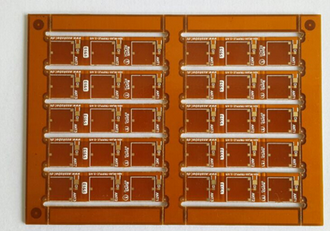PRODUCTS
Advanced High Frequency PCB Design

The world of electronics is rapidly evolving, demanding ever-increasing speeds and higher frequencies in signal transmission. This necessitates advanced techniques in Printed Circuit Board (PCB) design, pushing the boundaries of what's possible in miniaturization and performance. Advanced High-Frequency PCB design isn't just about shrinking components; it's about meticulously managing signal integrity, minimizing signal loss, and controlling electromagnetic interference (EMI) at frequencies exceeding several gigahertz. Understanding these complexities is critical for developing high-speed digital systems, wireless communication devices, and sophisticated radar systems, among other applications. This article delves into the key aspects that define advanced high-frequency PCB design.
Signal Integrity Management
At high frequencies, even minute imperfections on a PCB can significantly impact signal integrity. Signal reflections, caused by impedance mismatches at connection points, become major sources of distortion and signal attenuation. Careful impedance control is paramount, requiring precise design of trace widths, spacing, and dielectric material selection to maintain a consistent characteristic impedance throughout the signal path. This often involves using controlled impedance techniques, such as microstrip and stripline configurations, and employing simulation tools to verify impedance matching before manufacturing.
Beyond impedance control, signal integrity also involves mitigating the effects of crosstalk, where signals on adjacent traces interfere with each other. Careful routing practices, including proper spacing and shielding techniques, are crucial to minimize crosstalk. The use of differential signaling, where data is transmitted using the difference between two signals, can also significantly improve noise immunity and reduce the impact of crosstalk.
Material Selection and Stackup
The choice of materials plays a pivotal role in high-frequency PCB design. Dielectric materials with low dielectric loss tangent (Df) are crucial to minimize signal attenuation at high frequencies. The dielectric constant (Dk) of the substrate material also influences the characteristic impedance and must be carefully chosen to achieve the desired impedance matching. Common high-frequency materials include Rogers RO4000 series, Taconic RF-35, and Arlon 25N, each with different properties optimized for specific applications.
The PCB stackup, which defines the layer configuration and material placement, is equally critical. Optimizing the stackup to minimize signal reflections and crosstalk requires careful consideration of the trace impedance, ground plane configuration, and layer thicknesses. Multilayer PCBs are often preferred for high-frequency applications to provide controlled impedance structures and effective shielding. Sophisticated simulation software is used to model and analyze various stackup configurations before fabrication.
EMI/EMC Considerations
High-frequency circuits generate electromagnetic radiation that can interfere with other components and systems. Effective shielding and grounding techniques are vital to minimize electromagnetic interference (EMI) and ensure electromagnetic compatibility (EMC). Ground planes, often multiple ground planes for better shielding, are essential for reducing noise and distributing return currents effectively. Careful placement of components, including decoupling capacitors close to power pins, also helps to mitigate EMI.
Meeting regulatory standards for EMI/EMC compliance requires rigorous testing and verification. Measurements are conducted in shielded chambers to assess radiation levels and susceptibility to external interference. Design iterations based on simulation and measurements are often necessary to achieve compliance with regulations like FCC and CE standards.
Advanced Design Techniques
High-speed signal transmission often requires sophisticated techniques beyond conventional PCB design methodologies. Controlled impedance routing, differential pair routing, and the use of vias with controlled impedance are all vital components. Careful consideration must be given to the placement and routing of high-speed components like connectors, high-frequency ICs, and RF components to minimize signal degradation.
Furthermore, the use of advanced simulation tools is indispensable. These tools allow designers to predict and analyze signal integrity, EMI, and thermal performance before the PCB is manufactured, significantly reducing design iterations and time-to-market. Software packages like ANSYS HFSS, CST Microwave Studio, and Keysight ADS provide powerful capabilities for high-frequency PCB analysis and optimization.
Manufacturing Considerations
The precise tolerances required for high-frequency PCB designs demand meticulous manufacturing processes. The selection of a competent PCB manufacturer with experience in high-frequency designs is essential to ensure the quality and performance of the final product. High-precision manufacturing techniques are often needed to achieve tight dimensional tolerances and maintain signal integrity. This includes accurate layer registration, precise trace widths, and consistent dielectric thickness.
Post-manufacturing testing, including impedance measurements and signal integrity analysis, is necessary to verify that the final PCB meets the specified design requirements. Any discrepancies between the design simulation and measured results may necessitate further design revisions or adjustments to the manufacturing process. The combination of advanced design techniques and stringent manufacturing control is crucial for the success of any high-frequency PCB design project.
SUBSCRIBE
INQUIRY

